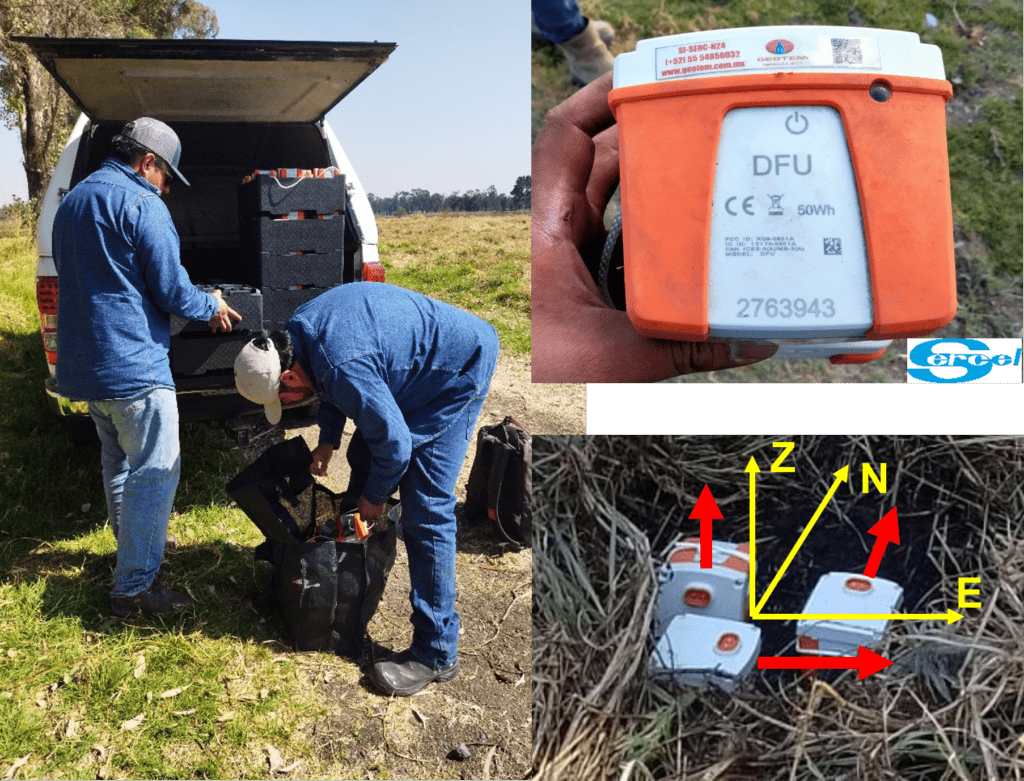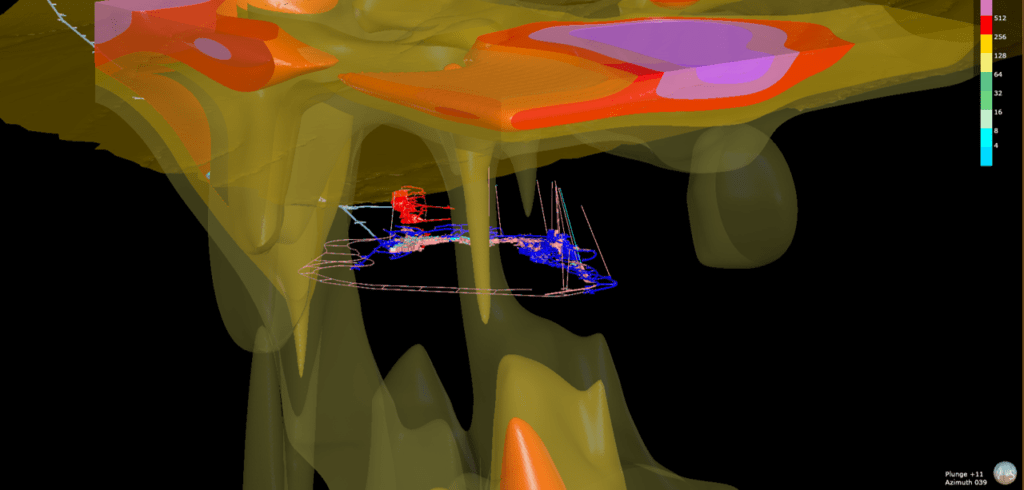OCTUBRE 29 A NOVIEMBRE 3, 2023
Hotel Sheraton Buganvilias · Puerto Vallarta · Jalisco · México

Geotem Ingeniería estará presente en Puerto Vallarta dentro del marco de la Reunión Anual de la Unión Geofísica Mexicana 2023. Contaremos con un espacio para exhibición de instrumental e información de nuestros servicios, asi como la presentación de los siguientes trabajos:
- DENSE NODAL PASSIVE SEISMIC IMAGING WITHIN THE CUEMANCO SUB-BASIN, MEXICO CITY.
The assessment of the elastic properties of the shallow subsurface of large cities is crucial for improving their microzonation and geotechnical characterization, in order to manage the seismic risk reduction and the infrastructure building codes. A useful non-invasive way to image the near-surface structure is with passive seismic methods, based on the usage of continuous ambient noise records through seismic sensors.
Here we present the shear-wave passive seismic imaging retrieved by using a seismic nodal dense array into the Cuemanco sub-basin, a remnant of the ancient huge Texcoco lake, where Mexico City is nested. We deployed a total of 175 broadband 1-component seismic nodes in a 1.1 km2 area for a maximum duration of about 6 hours. This array was composed by 109 vertical stations along six straight lines, from 850 to 1340 m length, where 33 of those had two more nodes in horizontal position to record the N-S and E-W components. The inter-station distance of the nodes was 60 m, with the exception of one line, where the minimum distances was 50 m.
After a pre-processing and a rigorous QC stage, that included decimation and conversion from SEGD to SAC format, we applied different passive seismic methodologies: 1) the horizonal-to-vertical spectral ratio (HVSR), 2) a passive multichannel analysis of surface waves (MASW), and 3) the ambient noise tomography (ANT). We calculated the HVSR iso-period map from the 33 three-components nodal stations database, retrieving periods from 3.0 to 3.6 s. Also, with the vertical nodes database we calculated a total of 5886 Green’s functions (GF) with the ambient noise cross-correlation; we gathered them as virtual shot-points along individual lines to retrieved a passive MASW database, from which we obtained 109 phase velocity dispersion curves and inverted them as six 2D Vs profiles. Finally, the full GF database was used to perform the ANT, where we obtained about 5640 group velocity dispersion curves from 0.25 to 4 Hz, and then we calculated the 2D tomograms and the final 3D Vs model. For the ANT, we modified a machine learning clustering method (Wang Z. et al., 2021) for the automatic picking of the group velocity dispersion curves.
The integrated model shows the shallow shear-wave structure of the Cuemanco sub-basin, which are in agreement with several previous geophysical, geological and hydrogeological studies. The main results of this study are: 1) a detailed image of the very-low velocity lacustrine deposits layer, with velocities of about 50 m/s; 2) the basement topography, which is located approximately at 50 m of depth; 3) a detailed iso-period map, which shows a slight slope from NWN to ESE, where the dominant resonance periods go from 3.0 to 3.6 s.

2. INVERSIÓN 1D DE DATOS MAGNETOTELÚRICOS CON ANISOTROPÍA ELÉCTRICA.
El análisis de la anisotropía eléctrica en el subsuelo terrestre ha cobrado relevancia recientemente, especialmente en el modelado de datos magnetotelúricos (MT), debido a la necesidad de comprender el impacto electromagnético de las estructuras geológicas subyacentes. Este creciente interés ha impulsado el desarrollo de metodologías avanzadas para el modelado e inversión de estructuras eléctricamente anisotrópicas. En este estudio, se describe el desarrollo de una serie de procesos para la inversión de datos MT unidimensionales (1D) en medios con anisotropía eléctrica. Partiendo del modelado directo propuesto por Pek y Santos (2002), la función objetivo (Ψ) se regula tanto en la suavidad del modelo como en la redundancia de la anisotropía. Posteriormente, Ψ se resuelve de dos maneras distintas: mediante un algoritmo de descenso de gradiente o mediante una metaheurística. En los resultados, se examinan las consecuencias de invertir datos MT sintéticos en medios anisotrópicos utilizando algoritmos convencionales. Esto conduce a la generación de artefactos numéricos en los procesos de inversión, resultando en modelos con un alto grado de incertidumbre y, por lo tanto, alejados de la realidad subyacente.

Te invitamos a conocer mas detalles en:



